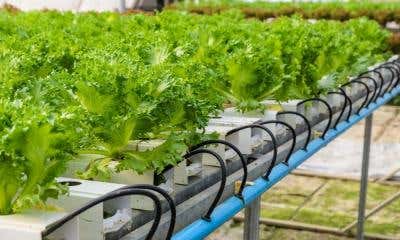Genetics and Strain Selection
-
High-Yielding Strains: Choosing cannabis strains known for their high yield potential is a fundamental step in maximizing harvests. Varieties like "White Widow," "Big Bud," and "Northern Lights" have a reputation for producing large quantities of high-quality buds.
-
Hybrid Vigor: Taking advantage of hybrid vigor, also known as heterosis, by crossing two genetically diverse cannabis strains can result in offspring that exhibit enhanced growth, yield, and overall vigor. Breeding programs often focus on hybridization to capitalize on the benefits of hybrid vigor.
Optimal Growing Environment
-
Light Intensity: Providing the appropriate light intensity is crucial for maximizing cannabis yields. High-intensity discharge (HID) lights such as high-pressure sodium (HPS) and metal halide (MH) are commonly used for indoor cultivation. LED lights have also gained popularity due to their energy efficiency and customizable spectrum.
-
Temperature and Humidity Control: Maintaining optimal temperature and humidity levels throughout the cultivation cycle is essential. Cannabis plants thrive in temperatures between 70-85°F (21-29°C) during the day and slightly cooler temperatures at night. Controlling humidity between 40-60% helps prevent mold and other issues.
-
CO2 Enrichment: Increasing carbon dioxide (CO2) levels in the growing environment can enhance photosynthesis and boost plant growth. Supplemental CO2 systems are commonly used in indoor cultivation to maintain elevated CO2 concentrations, typically around 1000-1500 parts per million (ppm).
-
Air Circulation and Ventilation: Proper air circulation and ventilation prevent the buildup of heat, humidity, and stagnant air pockets. This promotes healthy plant growth, discourages pests and diseases, and ensures the effective exchange of gases necessary for photosynthesis.
-
Nutrient Management: Providing a balanced nutrient regimen tailored to the specific needs of cannabis plants is crucial for maximizing yields. Regular monitoring of nutrient levels and adjusting the feeding schedule based on plant development stages helps prevent nutrient deficiencies or toxicities.
Pruning and Training Techniques
-
Topping: Topping involves removing the top portion of the main stem, encouraging the growth of multiple main colas instead of a single dominant cola. This technique promotes bushier growth and increases the number of flowering sites, leading to higher yields.
-
LST (Low-Stress Training): LST involves gently bending and tying down the branches of cannabis plants to create a more even canopy. This technique ensures that more buds receive direct light, maximizing the potential for larger yields.
-
ScrOG (Screen of Green): The ScrOG technique involves placing a screen or netting above the plants and training the branches horizontally. This technique allows for better light distribution, improved bud development, and higher yields.
Proper Nutrient Timing and Feeding
-
Vegetative Stage: During the vegetative stage, cannabis plants require a higher nitrogen (N) ratio to support vigorous growth and the development of a robust canopy. Providing a balanced nutrient solution with a focus on nitrogen-rich formulations promotes healthy vegetative growth.
-
Flowering Stage: Transitioning to a nutrient solution with a higher phosphorus (P) and potassium (K) ratio is crucial during the flowering stage. These nutrients support flower development, bud formation, and overall yield. Supplementation with bloom boosters and PK additives can further enhance flowering.
Timing of Harvest
-
Trichome Evaluation: Monitoring trichomes, the resin glands on the flowers, is essential for determining the optimal harvest time. Harvesting at the right moment, when trichomes are milky or amber, ensures peak potency and maximizes the desired effects.
-
Flush Period: Implementing a flush period before harvest allows for the removal of excess nutrients and salts from the plant's tissues. This enhances the overall quality, flavor, and smoothness of the harvested buds.
By employing effective strategies such as strain selection, optimizing the growing environment, utilizing pruning and training techniques, providing proper nutrient timing, and harvesting at the right moment, cultivators can maximize cannabis yields. With attention to detail and consistent implementation of these strategies, cultivators can achieve bigger harvests with optimal quality, ultimately leading to greater satisfaction and success in cannabis cultivation.
















